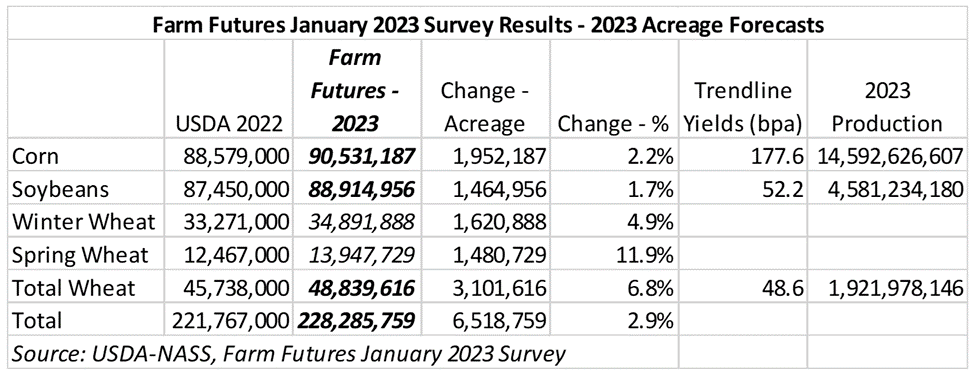|
News Bits
By Russ Quinnn , DTN Staff Reporter
OMAHA -- Most average retail fertilizer prices were lower the third week of January 2023, according to sellers surveyed by DTN. Prices have moved considerably lower in recent weeks.
Seven of the eight major fertilizers are lower in price compared to last month. Of these seven, the prices of six fertilizers were significantly lower, which DTN designates as a change of 5% or more.
Both potash and anhydrous were down 9% compared to last month. Potash had an average price of $721 per ton, while anhydrous had an average price of $1,238/ton.
Both UAN28 and UAN32 were down 7% compared to last month. UAN28 had an average price of $536/ton, while UAN32 was $634/ton.
Urea was 6% less expensive, and MAP was 5% lower. Urea had an average price of $712/ton, while MAP was at $865/ton.
One fertilizer was just slightly lower in price compared to a month earlier. DAP had an average price of $859/ton.
One fertilizer was slightly higher in price compared to last month. 10-34-0 had an average price of $755/ton.
On a price per pound of nitrogen basis, the average urea price was at $0.77/lb.N, anhydrous $0.76/lb.N, UAN28 $0.96/lb.N and UAN32 $0.99/lb.N.
To read the entire report click here.
The Illinois Fertilizer and Chemical Association is keeping a close eye out for any pesticide related legislation being introduced in the new General Assembly.
President KJ Johnson tells Brownfield he expects there to be debates about atrazine, chlorpyrifos and Round-Up, but based on congressional action last year, he thinks a ban on dicamba and neonicotinoids could move quickly this year.
"I think they will try and make a major run at those pieces of legislation. The other ones I think they will throw at the wall and see what sticks, but the dicamba and neonic bans are the ones we are really watching right now."
He says a complete ban on these agronomic tools, being pushed by environmental groups, would not be good for Illinois grain farmers.
"Dicamba is used in soybeans, but when talking to retailers we are hearing more people switching it to a corn product. If we lose those two products in corn, dicamba and atrazine, we are in really tough shape."
The 103rd Illinois General Assembly was sworn in on January 11th and bills are being introduced in the coming weeks.
Editor's Note: What could go wrong? Ban crop protection products in the nation's number one producer of soybeans and number two corn producing state?
SUPPLY CHAIN EXPERT SAYS CALIFORNIA DAIRIES MAY MOVE TO MIDWEST FOR CHEAPER FEED, WATER
Agri-Pulse reports:
Some California dairy producers are looking to move to the Midwest to lower their production costs, according to Katie Burgess, director of risk management at Ever.Ag, an ag technology company.
California producers face costs $2 to $3 per hundredweight higher than their Midwest counterparts pay, Burgess says. "If you put yourselves in the shoes of a dairy producer, the outlook for the next 12 months is as dim as it has been," Burgess says. She spoke on a panel at the Dairy Forum.
The I-29 corridor in particular is a "hotspot" for dairy farm expansion, she says.
Bottom line: Sara Dorland, managing partner for Ceres Dairy Risk Management, says dairies will move to where water and feed are available. In the late 1980s and early '90s, there was a great migration of dairies to the West because of expansive amounts of land, water and inexpensive feed.
"I don't think that means we're going to turn the lights off on the West. But I do think it just means we could see a bit more consolidation," Dorland said. California's dairy production will help service the growing demand for dairy exports to China and southeast Asia.
|
 Farm Futures Growers Survey - Planted Acreage of Major Crops to Increase
Farm Futures Growers Survey - Planted Acreage of Major Crops to Increase Farm Futures Growers Survey - Planted Acreage of Major Crops to Increase
Farm Futures Growers Survey - Planted Acreage of Major Crops to Increase